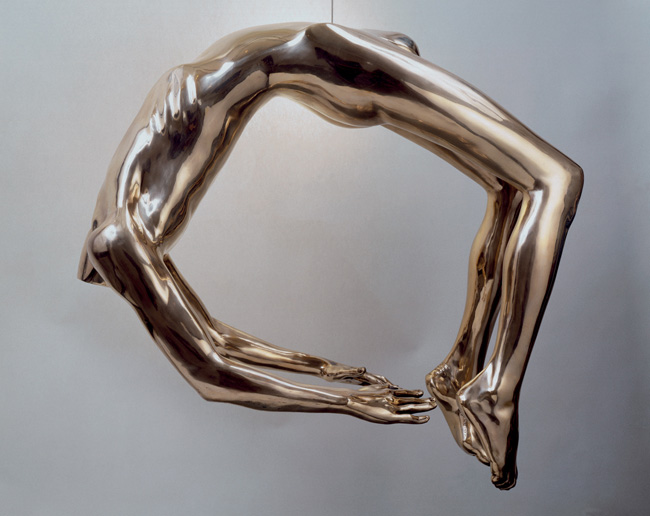
ARTE TORNA ARTE
ART RETURNS TO ART
FROM MAY 8 TO NOVEMBER 4, 2012
Over 40 works by 32 contemporary artists in the historic rooms of the Galleria dell’Accademia
Louise Bourgeois, Arch of Hysteria, 1993. Courtesy Cheim & Read and Hauser & Wirth. Photo: Allan Finkelman - ©Louise Bourgeois Trust- Louise Bourgeois Trust/VAGA, New York, by SIAE 2012 | ||
The exhibition Art Returns to art, curated by Bruno Corà, Franca Falletti and Daria Filardo, will see the installation in the rooms of the Galleria dell’Accademia of works by: Francis Bacon, Louise Bourgeois, Alberto Burri, Antonio Catelani, Martin Creed, Gino de Dominicis, Rineke Dijkstra, Marcel Duchamp, Luciano Fabro, Hans Peter Feldmann, Luigi Ghirri, Antony Gormley, Yves Klein, Jannis Kounellis, Ketty La Rocca, Leoncillo, Sol LeWitt, Eliseo Mattiacci, Olaf Nicolai, Luigi Ontani, Giulio Paolini, Claudio Parmiggiani, Giuseppe Penone, Pablo Picasso, Alfredo Pirri, Michelangelo Pistoletto, Renato Ranaldi, Alberto Savinio, Thomas Struth, Fiona Tan, Bill Viola, Andy Warhol. Louise Bourgeois’s Arch of Hysteria, hung with all its charge of “life’s emotional frenzy” in front of Pontormo’s Venus and not far from Michelangelo’s David,will offer definitive proof of how the naked form of the human body can be used to express concepts and stir sensations that are vastly different. And the effort to bring form out of brute matter, something which obsessed Michelangelo all his life, seems to still weigh heavily today on the shoulders of Giuseppe Penone in his arduous hollowing out of massive tree trunks, just as it is echoed in the forms carved out of concrete by Antony Gormley.
| ||
|
GALLERIA DELL’ACCADEMIA
Via Ricasoli 58, I-50121 Florence
INFORMATION: • Phone: +39 055 290383 • Website: http://www.unannoadarte.it • Mail : firenzemusei@operalaboratori.com OPENING TIMES: • Tuesday-Sunday 8:15 am-6:50 pm; the ticket office closes at 6:20 pm • In the months of July, August and September opening hours will be extended on Tuesdays until 10 pm and there will be a special opening on Thursdays with entrance free of charge from 7 to 10 pm. • Closed on Mondays’ ADMISSION PRICE: • Full price: € 11.00; reduced price for EU citizens between 18 and 25: € 5.50 • Free for EU citizens under 18 and over 65 The ticket is also valid for the Department of Musical Instruments CONTACTS: • Mariella Becherini Phone: +39 055 290383 m.becherini@operalaboratori.com • Silvia Cresti s.cresti@operalaboratori.com
|
||

